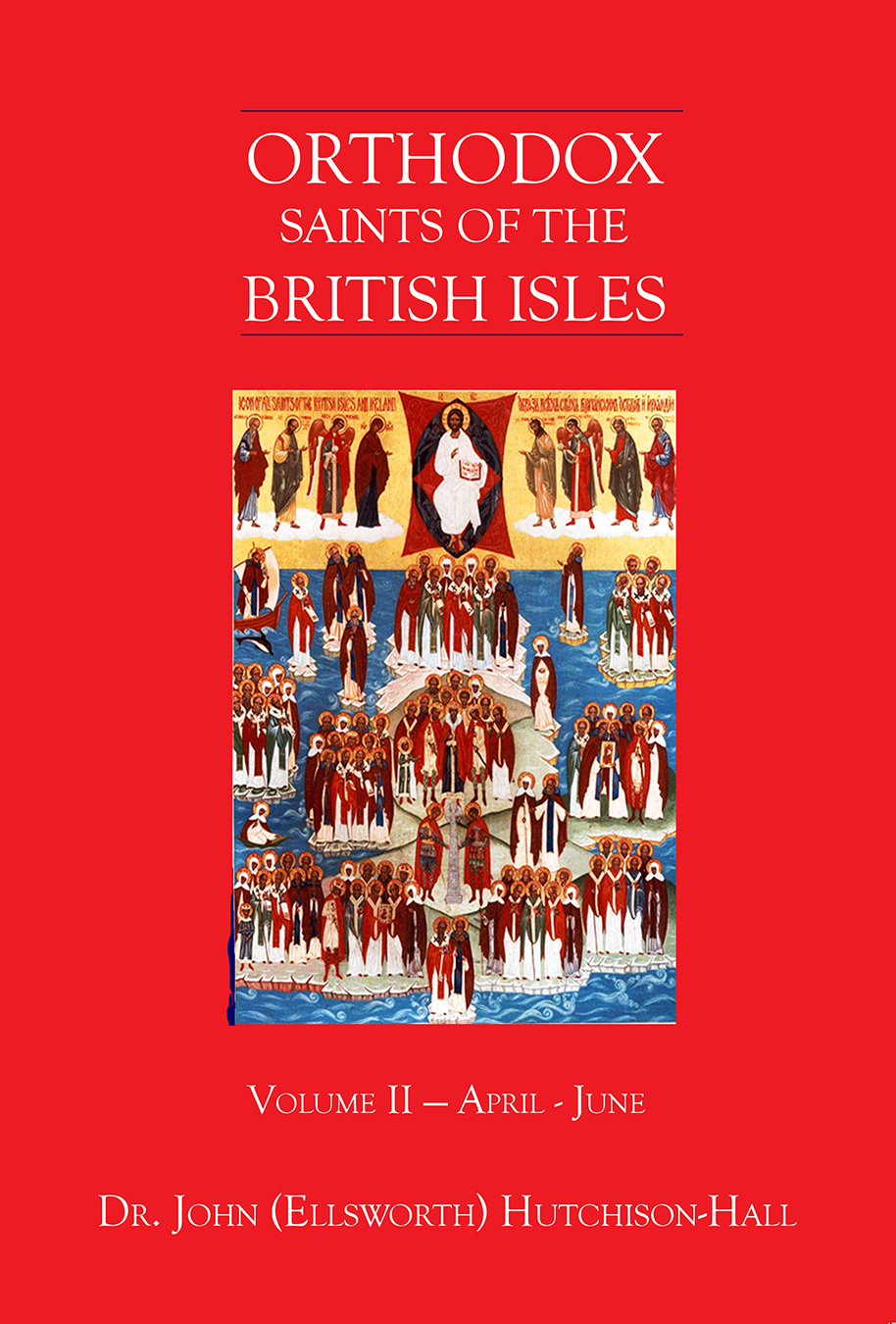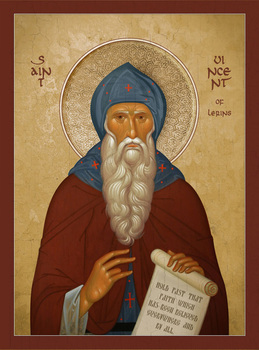
Orthodox Saints of the Pre-Schism
See of Rome
24th May (NS) — 11th May (OS) 2023
ANASTASIUS of LÉRIDA, a soldier of the Imperial Roman Army martyred in 303 at Lérida in Catalonia (Spain) during the Diocletianic Persecution (303–313).
ANTHIMUS of ROME, a priest in Rome, very successful in bringing people to Christ, and at the same time avoiding the attention of the authorities. Though when St. Anthimus converted a Prefect, the authorities took notice. He was arrested and sentenced to be drowned in the Tiber. However, when the sentence was carried out, he was miraculously pulled from the river by an angel. St. Anthimus recommenced his evangelisation, but was soon arrested again, and this time beheaded on the Via Salaria outside of Rome, in 303.
EVELLIUS of PISA, an advisor to Emperor Nero (r. 54–68), who was so impressed by the faith and patience of martyrs that he converted to Christianity. St. Evellius then fled the imperial court and Rome, but was captured and beheaded in Pisa circa 66.
FREMUND of DUNSTABLE, St. Fremund was an Anglo-Saxon hermit, and perhaps a member of the Royal Family of Mercia. He appears to have been martyred in 866 by Viking marauders. His relics were enshrined at Dunstable in Bedfordshire, England.
GENGULPHUS (GANDOUL, GANGLOFF, GANGULF) of BURGUNDY, a nobleman and courtier in the Merovingian court in Burgundy. When his wife proved to be a serial adulteress, St. Gengulphus lived as a hermit in his castle. He was murdered by one of his wife’s paramours in 760. Due to the circumstances of his death, and the miracles wrought at his tomb, St. Gengulphus has been honoured as a martyr.
ILLUMINATUS of SAN SEVERINO, a late tenth century monk at Abbey of San Mariano (Abbazia di San Mariano) in present-day valle Fabiana, San Severino Marche, Italy.
MAJOLUS (MAIEUL) of CLUNY, a priest at Lyon (east-central France), who, when chosen to become Bishop of Besançon, fled to the Abbey of SS. Peter and Paul of Cluny (abbaye Saint-Pierre et Saint-Paul de Cluny — Cluny Abbey) where he received monastic tonsure. When the Abbot, Aymard, became blind, he resigned, and St. Majolus was elected Abbot of Cluny. His education and piety led him to be called upon to advise not just other monastic communities seeking to improve their discipline, but secular authorities as well, especially Otto II, Holy Roman Emperor (r. 973–983). St. Majolus reposed at Sauvigny (north-eastern France) in 994, whilst on his way to Paris.
MAMERTUS of VIENNE, second Archbishop of Vienne (south-eastern France), it is believed he is the Bishop Mammertus listed amongst the attendees of the Council of Aries in 475. St. Mamertus reposed later that year.
MAXIMUS, BASSUS, and FABIUS of SABINA, three Christians martyred in 304, on the Via Salaria outside Rome during the Diocletianic Persecution.
POSSESSOR of VERDUN, Bishop of Verdun (north-eastern France) from 470 until his repose circa 485. St. Possessor shepherded his flock during a time of endless waves of Frank, Vandal, and Goth invasions.
PRINCIPIA of ROME, a disciple of St. Marcella (31st January) in Rome. St. Principia reposed circa 420.
SISINIUS, DIOCLETIUS, and FLORENTIUS, Martyrs of Osimo, martyred in 303 at Osimo near Ancona (Italian Marches) during the Diocletianic Persecution.
TUDY (TUDINUS, TEGWIN, THETGO), (Fifth Century), a disciple of St. Brieuc of Brittany (1st May). St. Tudy was a monk, missionary in Brittany (France) and Cornwall (England), and finally Abbot of the Abbey of St. Winwalöe of Landévennec (abbaye Saint-Guénolé de Landévennec — Landévennec Abbey) in Brittany.
WALBERT (VAUBERT) of HAINAUT, a Duke of Lorraine (France), and Count of Hainaut (Belgium). St. Walbert was married to St. Bertille of Thuringia (3rd January) with whom he fathered SS. Waldetrudis (9th April) and Aldegund (30th January). Nothing further seems to be known of his life. St. Walbert reposed circa 678.
Get your copy of Orthodox Saints of the British Isles today.
Available at Amazon or your favourite e-bookstore.
AFRA, the wife of a nobleman in Brescia, Lombardy (Italy). St. Afra converted to Christianity as an adult, was baptised by St. Apollonius (7th July), and was later martyred. Most sources give circa 133 as the date of her martyrdom, though much of what is known of St. Afra today is based upon legends which are of questionable reliability.
DONATIAN and ROGATIAN, two brothers in Nantes in Brittany (France), who were beheaded in 299, for their faith in Christ during the Diocletianic Persecution.
PATRICK (PATRICIUS), the fifth Bishop of Bayeux in Normandy (France). St. Patrick reposed circa 469, nothing further seems to be known of his life.
ROBUSTIAN, (Date Unknown), a martyr in Milan (Italy) from early in the Christian era, of whom no information is extant. It is possible that he is the same St. Robustian who is commemorated with St. Mark on 31st August.
VINCENT of LÉRINS, best known as the author of Commonitorium Adversus Haereses (Commonitory) in which he formulated the time-honoured principle that the only true teachings of the Church are those that have been “…held true everywhere, always and by all the faithful…” (“…teneamus quod ubique, quod semper, quod ab omnibus creditum est....”). St. Vincent was a Gallic nobleman and career soldier. In later life, he left the world and received monastic tonsure and was priested at the Abbey of Our Lady of Lérins (abbaye Notre Dame de Lérins). St. Vincent reposed circa 445.
VINCENT of PORTO, (Date Unknown), a martyr in Porto Romano, the ancient port of Rome.
ZÖELLUS, SERVILIUS, FELIX, SILVANUS, and DIOCLES, (Date Unknown), a group of early martyrs in the Istria peninsula in present-day Croatia. Nothing more than these names is known.
Prior to the Schism the Patriarchate of Rome was Orthodox, and fully in communion with the Orthodox Church. As Saint John of Shanghai and San Francisco +1966 said “The West was Orthodox for a thousand years, and her venerable Liturgy is far older than any of her heresies”.
Details of British Saints excerpted from Orthodox Saints of the British Isles.
Details of continental saints from these sources.
In many cases there are several spelling versions of the names of saints from the British Isles. I use the Oxford Dictionary of National Biography version as the primary version with the more prevalent version in parenthesis e.g. Ceadda (Chad) of Lichfield.


